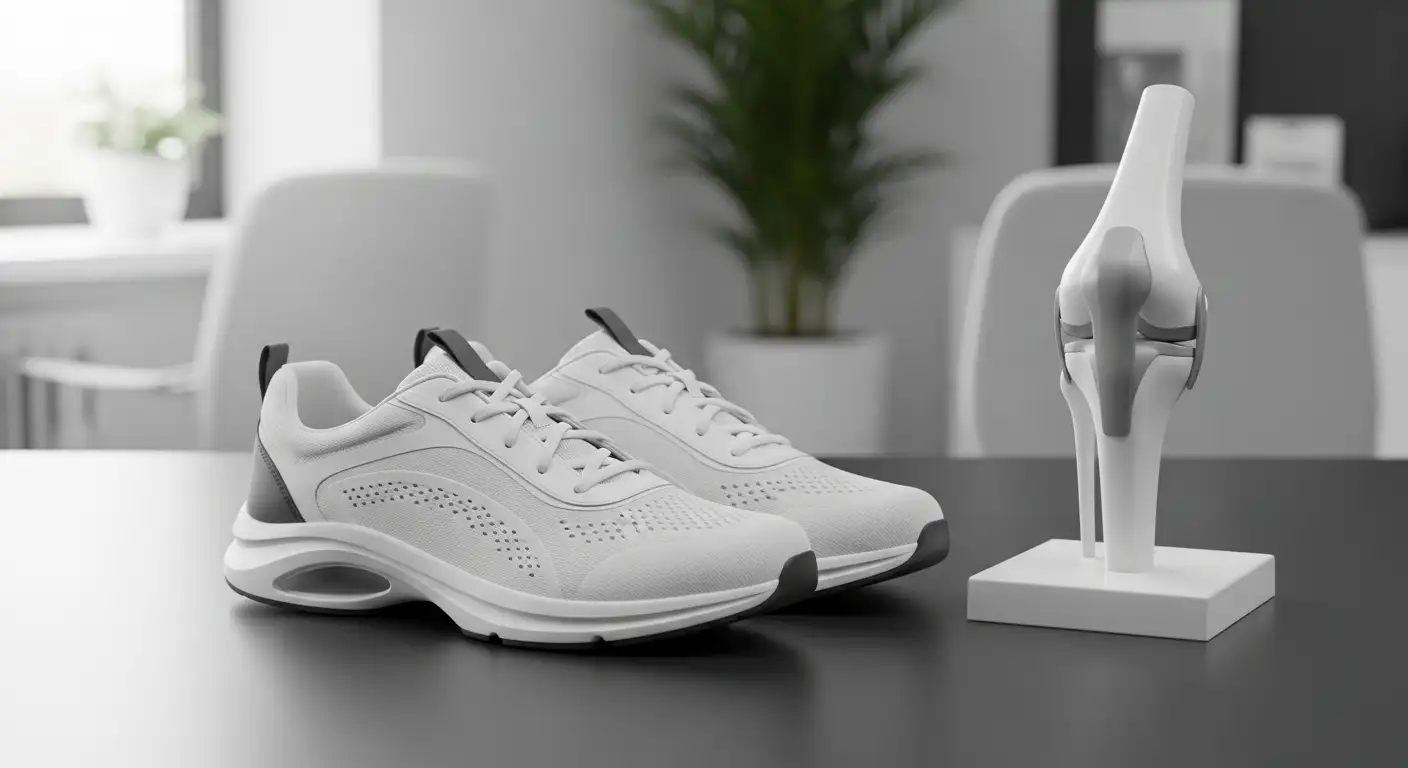Understanding Knee Pain
Knee pain is a common ailment that affects individuals of all ages. To effectively manage this issue, it is crucial to understand its causes and symptoms.

Causes of Knee Pain
Several factors can lead to knee pain. Understanding these causes can help individuals take proactive steps to protect their knees. Common causes include:
Cause of Knee PainDescriptionInjuriesTrauma to ligaments or muscles around the kneeArthritisDegeneration of cartilage over timePatellar InstabilityMisalignment of the kneecapOveruseRepetitive stress from physical activitiesBiomechanical IssuesMisalignment leading to joint stress
Symptoms of Knee Pain
Those experiencing knee pain may encounter various symptoms. Recognizing these signs can help identify the underlying cause and prompt appropriate treatment. Common symptoms include:
SymptomDescriptionPainDiscomfort localized in the knee areaSwellingInflammation indicating injuryStiffnessReduced range of motion in the kneeClicking or Popping SoundsNoises during movement due to mechanical issuesInstabilitySensation of the knee giving way
Understanding knee pain is an essential first step in determining if a patella brace or other treatment options are necessary. To explore more about effective solutions, consider learning about knee exercises for seniors or various stretches like the gastrocnemius stretch to support knee health.
Importance of Patella Braces
Patella braces play a crucial role in managing knee pain and supporting the knee joint. Understanding the functionality and benefits of these braces can help individuals make informed decisions about their use for various knee conditions.
Functionality of Patella Braces
Patella braces are designed to provide stability and support to the kneecap (patella), which is essential in preventing further injury. These braces focus on keeping the kneecap in place to avoid slippage and misalignment. By ensuring the patella remains stable during movement, these supports reduce the risk of additional harm to the knee joint [2].
Different types of patella braces are available, including:
Brace TypeFunctionalityPatella StabilizerKeeps kneecap stablePatellar Tracking OrthosisCorrects patellar alignment
Benefits of Using Patella Braces
Using a patella brace offers several benefits for individuals experiencing knee pain. These include:
BenefitDescriptionPain ReductionAlleviates knee pain during activitiesEnhanced RecoverySpeeds up recovery when combined with therapyCondition-Specific SupportEffective for a variety of knee issues
Patella braces serve as an important tool in the management of knee pain, supporting individuals in their journey towards healing and improved knee function. For a comprehensive approach, it's advisable to consider brace use alongside professional evaluation and physical therapy.
Types of Patella Braces
When managing knee pain, choosing the right type of patella brace can significantly impact comfort and mobility. There are three main types of patella braces: Patellar Tracking Orthosis (PTO) braces, patellar straps, and infrapatellar straps. Each type serves a specific purpose and is designed to address various knee issues.
Patellar Tracking Orthosis (PTO) Brace
The Patellar Tracking Orthosis (PTO) brace is specifically designed to assist individuals with patellofemoral pain, which can occur due to improper tracking of the patella (kneecap) HealthyChildren.org. This brace may reduce pain by limiting the movement of the patella and minimizing the risk of subluxation or dislocation. It is particularly helpful for those who experience discomfort while engaging in activities that involve knee flexion and extension.
FeatureBenefitLimited Patellar MovementReduces likelihood of dislocationPain ReductionAlleviates patellofemoral painImproved AlignmentSupports proper patellar tracking
Patellar Straps
Patellar straps, also known as knee straps, are designed to apply pressure to the patellar tendon. This pressure can relieve discomfort associated with jumping or running activities, making them a good option for athletes. These straps are often adjustable, allowing for a customized fit that supports different levels of intensity during activities.
FeatureBenefitTargeted CompressionReduces pain in the patellar tendonAdjustable FitProvides comfort during activityLightweight DesignEasy to wear throughout the day
Infrapatellar Straps
Infrapatellar straps are similar to patellar straps but are specifically designed to be worn below the patella. These straps help to alleviate pain associated with conditions like patellar tendonitis. By providing targeted support, they can enhance overall stability and comfort.
FeatureBenefitTargeted Pain ReliefAlleviates infrapatellar discomfortEnhanced StabilityImproves knee functionConvenient SizeDiscreet and easy to wear under clothing
Understanding the various types of patella braces and their specific functions can aid individuals in selecting the most suitable option for their knee condition. Patella braces can be purchased over-the-counter or can require a prescription from a healthcare provider, who will assess the need for a custom fit [5]. Additionally, patellar knee braces may be used to treat misalignment, tendon swelling, and degenerative conditions Painhero.
Consultation with a healthcare professional can help determine the appropriate type of brace for specific knee issues, and paired with a comprehensive rehabilitation program, it can enhance recovery and improve quality of life.
Considerations for Choosing a Patella Brace
Selecting the right patella brace involves careful consideration of several factors that influence its effectiveness and comfort. Understanding these aspects can help in making an informed decision.
Factors to Consider
When choosing a patella brace, several important factors should be taken into account:
FactorDescriptionType of PainIdentify the type of knee pain experienced. Different braces cater to specific issues such as instability or injury.Fit and SizeEnsure the brace fits well; a proper fit provides better support and comfort. Measure the knee circumference for accuracy.Level of SupportDetermine the required level of support based on activity levels and severity of the condition. Braces range from mild support to rigid immobilization.ComfortLook for padding and materials that minimize irritation during use. Comfort is essential for longer wear times.MobilityConsider how the brace affects movement. Some braces may limit mobility while others allow a full range of motion.PurposeDefine the primary use of the brace, whether it's for recovery, sports, or everyday wear.
Custom-Fit vs. Over-the-Counter Options
There are generally two categories of patella braces: custom-fit and over-the-counter options. Each has distinct advantages.
TypeAdvantagesDisadvantagesCustom-Fit Braces- Tailored to individual's anatomy
- Optimal support and comfort
- Better stabilization for specific conditions- Higher cost
- May require a prescription or professional fittingOver-the-Counter Braces- More affordable and readily available
- Easy to find in most stores or online
- Can provide general support for mild conditions- May not fit perfectly or provide ideal support
- Limited in addressing specialized needs or severe conditions
Pateller stabilizers focus on keeping the kneecap in place to avoid further harm by ensuring stability [2]. Understanding the differences between custom-fit and over-the-counter options can help guide individuals in selecting a brace that best meets their needs.
Effectiveness of Knee Braces
Knee braces are valuable tools in managing knee pain and can significantly impact the recovery process and overall comfort of the individual. Understanding their effectiveness is crucial for those considering their use.
Role in Recovery Process
Knee braces can play an essential role in the recovery journey. When used in conjunction with physiotherapy, they can enhance recovery by providing support and stability to the knee joint. This combination aids in improving movement, strength, and function [3].
Key benefits during the recovery process include:
BenefitDescriptionStress ReductionKnee braces help reduce stress on the knee joint, which is crucial for healing.Custom FitMany braces offer adjustable features for a personalized fit, ensuring optimal support.Improved Range of MotionThey can assist in enhancing the range of motion as the knee heals.Strength EnhancementContinuous use encourages gradual strength improvement in the knee muscles.
This approach helps speed up rehabilitation, making it faster and more effective by reducing pain and improving knee joint function [3].
Reducing Pain and Swelling
Knee braces are effective in alleviating pain and swelling associated with various knee injuries, including sprains, strains, and ligament tears. They offer protection to the knee joint and can help individuals return to their daily activities more comfortably [3].
The mechanism works as follows:
For those interested in specific rehabilitation practices, consider incorporating knee exercises for seniors or exploring stretches like the gastrocnemius stretch to complement their recovery plan. The right brace, combined with appropriate exercises, can greatly enhance recovery efforts and improve quality of life.
Innovations in Patella Knee Braces
Recent advancements in the design of patella braces have introduced new technologies that enhance their effectiveness in managing knee pain. Two notable innovations in this space are liquid spring technology and offloading mechanisms.
Liquid Spring Technology
Liquid spring technology is a cutting-edge feature found in modern knee braces, such as the Levitation knee brace. This technology enables the brace to reduce joint loads by up to 50%, offering significant relief for individuals experiencing patellofemoral knee pain. Research indicates that using the Levitation 2 brace, which incorporates liquid spring technology, can create a sensation equivalent to losing about 45 pounds of body weight by alleviating pressure from the patellofemoral compartment [4].
The mechanism works by utilizing liquid-filled compartments that absorb shock and distribute force evenly across the knee joint during physical activity. This design not only minimizes discomfort but also assists in protecting the knee from further injury.
MetricReduction AmountJoint LoadsUp to 50%Equivalent Weight Loss45 pounds
Offloading Mechanism
The offloading mechanism is another crucial innovation that enhances the functionality of patella braces. This mechanism targets specific areas of the knee joint to redistribute forces that typically contribute to pain and discomfort. For instance, patellofemoral offloading focuses on relieving pressure from the knee’s patellofemoral joint, which is often a source of pain for individuals with conditions like patellofemoral syndrome.
Braces equipped with this mechanism are particularly beneficial for those suffering from severe knee pain. The Levitation 2 model exemplifies a tri-compartment offloader knee brace that effectively reduces pressure within the patellofemoral compartment, allowing for a more comfortable range of motion and improved mobility during daily activities [4].
Incorporating these innovations in patella braces not only addresses pain management but also promotes better overall knee health. Understanding these technological advancements can aid individuals in selecting the most appropriate brace for their specific condition.
References
[2]:
[3]:
[4]:
[5]:





